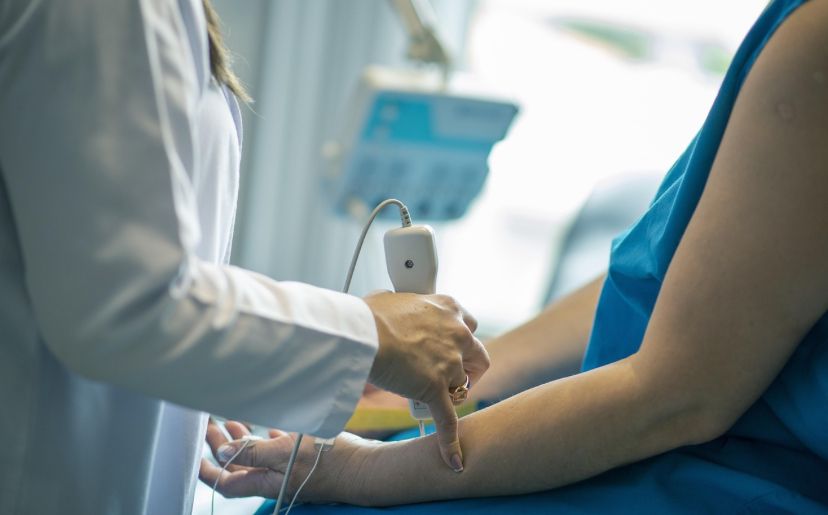
PainChek Ltd (ASX: PCK) has secured a De Novo classification from the U.S. Food & Drug Administration (FDA) for its PainChek® Adult App, a smartphone/tablet-based medical device that assesses and monitors pain at the point of care. As part of the decision, the FDA created a new product code (SGB)—formal recognition that this is a first-of-its-kind regulated device for pain assessment in U.S. long-term care.
Management says the clearance makes PainChek the first and only regulated pain-assessment device for people who cannot reliably verbalise, unlocking access to the world’s largest aged-care market. The immediate U.S. opportunity is framed as ~US$100 million per annum across ~3 million long-term care beds—before accounting for other care settings.
In aged care, pain is often under-recognised, especially in residents with dementia or communication impairments. A regulated, point-of-care digital tool—validated through a U.S. clinical program—can standardise assessment, support documentation, and feed quality measures tied to reimbursement. PainChek notes the U.S. regulatory and reimbursement environment is already aligned to improve pain management, a backdrop that may accelerate adoption in nursing homes.
The De Novo pathway is strategically important. It not only provides a marketing authorisation but also defines special controls and a classification baseline for any future entrants. With its own product code (SGB), PainChek effectively sets the reference bar for this device category, a position that can translate into a durable competitive moat while the market develops.
PainChek highlights integrations with PointClickCare and Eldermark—electronic health platforms that together cover ~60% of the U.S. and Canadian long-term care market. A reseller agreement with Eldermark is also in place to accelerate deployments, while a dedicated North American commercial team (including a new Head of Business Development and leadership relocated from Australia) is recruiting to fast-track direct sales and implementations.
The company will showcase the clearance and product at key U.S. aged-care conferences in coming weeks, including AHCA/NCAL (Las Vegas, Oct 19–22) and LeadingAge (Boston, Nov 2–5), providing live touchpoints with operators, clinicians and purchasing groups.
With De Novo granted for the Adult App in long-term care, PainChek sees a streamlined pathway to extend into home care and hospital settings. Management estimates that broadening into these segments could lift the total U.S. opportunity to ~US$582 million per year. The U.S. clinical trial program completed over the last two years has generated local clinical evidence to support market acceptance.
Internationally, the new FDA classification also opens doors. PainChek points to potential expedited approval in Japan—the second-largest long-term care market (~1.1m beds)—and faster entry into countries that recognise FDA approvals for abbreviated processes (e.g., parts of the Middle East and Latin America). Patent coverage spans major jurisdictions including US, EU, UK, Japan and China.
“This FDA De Novo clearance is a transformative achievement for PainChek, uniquely positioning us to enhance pain assessment and management in the world’s largest healthcare market. It validates our innovative technology and provides the foundation for accelerated US market growth, building off our established success in Australia and the momentum we’ve recently achieved in the UK. I also want to thank the FDA for their continuous guidance through this unique De Novo regulatory classification grant and to my team and our research collaborators for their outstanding efforts.”
Source: PCK ASX Annoucement
PainChek’s app automates multidimensional pain assessment and pairs it with the standard Numerical Rating Scale (NRS), enabling consistent, at-bedside scoring and analytics for auditing, funding support and clinician communication. Globally, the technology already holds medical-device clearance in Australia, Canada, EU, UK, New Zealand, Singapore and Malaysia, and has been deployed across ~1,900 facilities with 12m+ digital pain assessments recorded to date. Clinical studies—including work published in BMC Geriatrics and the Journal of Alzheimer’s Disease—support validity in residents with moderate-to-severe dementia.
PainChek has also developed an Infant solution that detects six facial action units indicative of pain in 1–12 month-olds, illustrating the broader platform scope beyond seniors’ care.
This is a category-defining clearance for PainChek. The De Novo not only opens a meaningful U.S. revenue channel but also codifies a brand-new device category under product code SGB, providing competitive separation as the market matures. With platform integrations that cover a majority of LTC beds in North America, and a regulatory tailwind that aligns with U.S. reimbursement priorities for pain, the path from clearance to commercial adoption looks clearer than at any point in the company’s history.
Execution—conversion of pilots, proof of ROI for operators, and stepwise expansion into home care/hospital—is now the focus.
Source: PainChek ASX announcement, 8 Oct 2025.
Disclaimer - Skrill Network is designed solely for educational and informational use. The content on this website should not be considered as investment advice or a directive. Before making any investment choices, it is crucial to carry out your own research, taking into account your individual investment objectives and personal situation. If you're considering investment decisions influenced by the information on this website, you should either seek independent financial counsel from a qualified expert or independently verify and research the information.
Tags:
RECENT POSTS
TAGS
Subscribe to the Skrill Network Newsletter today and stay informed
Recommended Articles